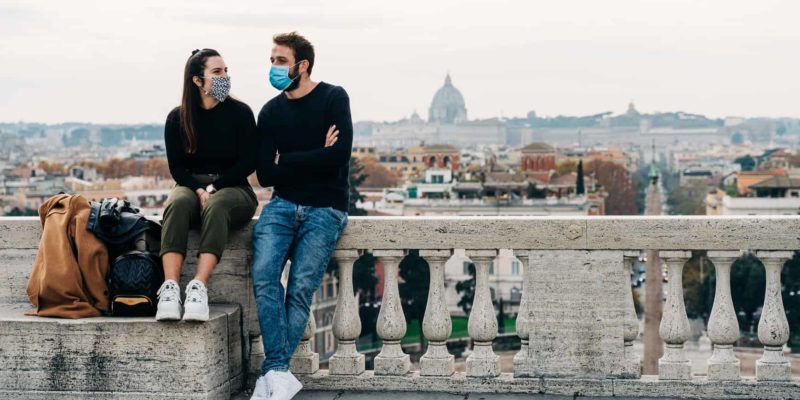Update: As of June 1, 2022, the Italian Government no longer requires the Covid-19 Digital Green Certificate for entry into Italy from EU Member States and other foreign countries. You can find more details on the official website of the Italian Ministry of Health.
As of March 2020, the health emergency caused by COVID-19 persists in Italy.
However, after being hit hard in the early stages of the first wave, the country was one of the first to reopen to visitors.
With the number of people hospitalised with coronavirus-related conditions dropping and the vaccination rates increasing each day, Italy can safely welcome foreign tourists. The Italian borders have been open to visitors for most of 2021, with some restrictions in place.
If you’re planning to visit Italy during the COVID-19 pandemic, here’s your ultimate guide to a perfect travel experience that will save you headaches.
Table of contents:
- Travelling to Italy during COVID-19: The basics
- Italy: COVID-19 travel rules and entry requirements
- How to use the COVID-19 digital green certificate in Italy
- What happens if you test positive for COVID-19 while visiting Italy?
1. Travelling to Italy During COVID-19: The Basics
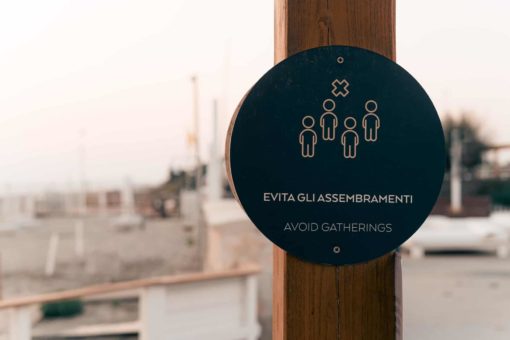
Like many travellers, you may be confused by inconsistent COVID-19 travel rules, advice, and recommendations across Europe (not to mention the misleading travel information scattered all over the Internet).
There are numerous new laws and amendments to existing ones. That’s why finding out what regulations are actually in force is no easy feat – especially because you need to keep up with constantly changing travel restrictions.
Schengen countries have been updating their entry requirements since the COVID-19 pandemic outbreak – and the policies are anything but uniform. Each European country has the final say on what its travel restrictions are – and will be – for travellers crossing its borders.
If the uneven patchwork of COVID-19 national border restrictions is confusing you, let Visas Association give you a helping hand.
We will provide you with complete information concerning the travel restrictions currently applicable in Italy.
Before applying for a Schengen Visa for Italy, please consider that:
- Italy’s travel restrictions may NOT be the same as the travel restrictions applicable to other Schengen countries. It is your responsibility to familiarise yourself with the rules that apply in all European countries that you may travel to or transit through.
- According to the Embassy or Consulate you apply to, you may be required to submit your COVID-19 related certificate (of full vaccination or previous infection) with your Schengen Visa application.
- In all cases, the usual travel restrictions apply (Schengen Visas, duration of stay, etc.).
With that in mind, let’s take a closer look at the entry requirements for travellers who want to cross Italy’s borders.
2. Italy: COVID-19 Travel Rules and Entry Requirements
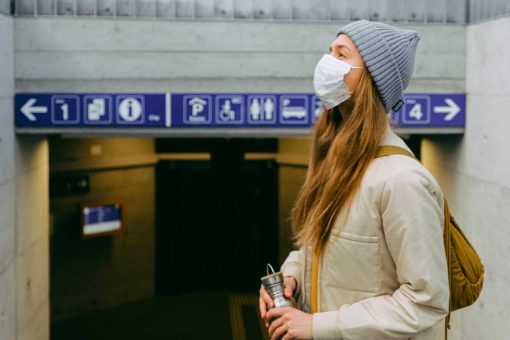
Italy permits entry to most European and non-European countries for non-essential purposes.
Before entering Italy from any country and for any travel reason, you MUST fill out a digital European Passenger Locator Form (dPLF). The form replaces the self-declaration made to the transport operator.
Please find below Italy’s entry requirements according to the country you come from or transited through:
1. List A: Vatican City and Republic of San Marino
For these countries, there is no limitation nor European Passenger Locator Form (dPLF) declaration requirement.
The certificates of vaccination and recovery issued by the authorities of these countries are equivalent to the Italian ones and can be used on Italy’s territory.
These certificates are valid in paper or digital format.
2. List B: At present, no state is included on this list
Movements to and from the states included on List B are allowed without any certification of motivation for travelling.
3. List C: Austria, Belgium, Bulgaria, Cyprus, Croatia, Denmark (including the Faroe Islands and Greenland), Estonia, Finland, France (including Guadeloupe, Martinique, Guyana, Reunion, Mayotte and excluding other territories outside the European mainland), Germany, Greece, Ireland, Israel, Latvia, Lithuania, Luxembourg, Malta, the Netherlands (excluding territories outside the European mainland), Poland, Portugal (including the Azores and Madeira), Czech Republic, Romania, Slovakia, Slovenia, Spain, Sweden, Hungary, Iceland, Norway, Liechtenstein, Switzerland, Andorra, Principality of Monaco.
You are free to travel from these countries to Italy for any reason if you have not stayed in or passed through one of the countries on List D or E in the 14 days prior to entering Italy.
If you have stayed in or passed through one or more States on the List C during the 14 days prior to entering Italy, you must:
- Fill in the digital European Passenger Locator Form (dPLF)
- Provide the EU Digital COVID-19 Certificate in one of the following languages: Italian, English, French or Spanish. The certificate must prove that you have completed the prescribed anti-SARS-CoV-2 vaccination cycle and show that you have received either 1 dose out of 1 or 2 doses out of 2.
or
- Provide a certificate of recovery from COVID-19 (the certificate of recovery is valid for 180 days from the date of the first positive swab).
or
- Show a negative result (paper or digital copy) for a rapid molecular (PCR) or antigenic test performed 48 hours prior to entering Italy. Children under 6 years of age are exempt from the pre-departure swab test.
Suppose you do not present green certification, recovery certification, or the negative result of a swab test when entering Italy. In that case, you can nevertheless enter the country, but you must undergo fiduciary isolation for 5 days. At the end of these 5 days, an antigen or molecular swab test must be carried out.
Please note that the certificate of completion of the vaccination cycle must include one of the four accepted vaccines: Pfizer BioNTech, Moderna, AstraZeneca/Oxford, Johnson &Johnson/Janssen.
4. List D: Albania, Saudi Arabia, Armenia, Australia, Azerbaijan, Bosnia and Herzegovina, Brunei, Canada, United Arab Emirates, Japan, Jordan, Lebanon, Kosovo, Moldova, Montenegro, New Zealand, Qatar, United Kingdom of Great Britain and Northern Ireland (including Gibraltar, the Isle of Man, Channel Islands and British bases on the island of Cyprus and excluding territories not belonging to the European continent), Republic of Korea, Republic of North Macedonia, Serbia, Singapore, United States of America, Ukraine, Taiwan, Hong Kong and Macao Special Administrative Regions.
Please note that specific rules have been adopted for entry from Japan, Canada, United States (see section no. 6).
You are free to travel from the countries on list D to Italy for any reason.
If you have stayed or passed through one of the countries on List D in the 14 days prior to entering Italy, you must:
- Fill in the digital European Passenger Locator Form (dPLF)
- Provide a Digital COVID-19 Certificate or equivalent in one of the following languages: Italian, English, French or Spanish. The certificate must prove that you have completed the prescribed anti-SARS-CoV-2 vaccination cycle and must be issued by the national health authority of the country you are travelling from (certificate of recovery not accepted)
- Show a negative result (paper or digital copy) for a rapid molecular (PCR) or antigenic test performed 72 hours prior to entering Italy. If you arrive from the UK, Northern Ireland and the British Isles, you must take the swab test 48 hours prior to entering Italy.
If you do not show both a negative swab test and a vaccination certificate when entering Italy, you must:
- Travel to your final destination in Italy by private transport only
- Remain in self-isolation and under health surveillance (by notifying the competent Health Centre in Italy in order to activate health surveillance) for 5 days
- Take an additional PCR or antigen test after 5 days of self-isolation
Please note that the certificate of completion of the vaccination cycle must include one of the four accepted vaccines: Pfizer BioNTech, Moderna, AstraZeneca/Oxford, Johnson &Johnson/Janssen.
5. List E: All States and territories not mentioned explicitly in other lists
Please note that specific rules have been adopted for entry from Brazil (see section 7), India, Bangladesh, and Sri Lanka (see section 8). For these countries, it is not possible to apply the same conditions as for the countries in List E.
From the countries in list E, it is not possible to enter Italy for tourism reasons. If you want to enter Italy from a country on List E, you are allowed to do it for the following reasons:
- Work
- Health reasons
- Study reasons
- Absolute urgency
- Return to your domicile, home, or residence
- You’re a family member of an Italian/EU/Schengen citizen and want to visit your family
- You have a proven and stable emotional relationship (even if not cohabiting) with an Italian/EU/Schengen citizen or a person legally residing in Italy
- You’re an athlete, technician, competition judge or official, foreign press representative or accompanying person participating in sports competitions recognised to be of national interest
If you have stayed or passed through one of the countries on List E in the 14 days prior to entering Italy, you must:
- Fill in the digital European Passenger Locator Form (dPLF)
- Show a negative result (paper or digital copy) for a rapid molecular (PCR) or antigenic test performed 72 hours prior to entering Italy
- Notify the prevention department of the health authority responsible for the area of your entry
- Reach the final destination in Italy only by private transport
- Undergo fiduciary isolation and health surveillance for 10 days
- Take an additional PCR or antigen test after 10 days of self-isolation
6. Japan, Canada, United States
Are you travelling from Japan, Canada or the United States? In that case, you are allowed to enter Italy for any reason without the need to undergo a 5-day self-isolation, upon presentation of the Passenger Locator Form and certification of molecular or antigenic test performed 72 hours before entering Italy, as long as you possess:
- The EU Digital COVID-19 Certificate in one of the following languages: Italian, English, French or Spanish. The certificate must prove that you have completed the prescribed anti-SARS-CoV-2 vaccination cycle and show that you have received either 1 dose out of 1 or 2 doses out of 2. Alternatively, you may present a certification issued by the local health authorities following a vaccination validated by the European Medicines Agency (EMA).
or
- Certificate of recovery from COVID-19 (the certificate of recovery is valid for 180 days from the date of the first positive swab).
If you only have a molecular or antigenic test certification, you are obliged to undergo self-isolation for 5 days. Then, you need to take an additional PCR or antigen test after 5 days of self-isolation.
7. Brazil
If you have stayed in or transited through Brazil during the previous 14 days, you are banned from entering and transiting Italy.
In that case, you are permitted to enter Italy only if:
- You are legally residing in Italy
- You need to reach the domicile, home or residence of your minor children, spouse, or partner
- You enter Italy for study purposes or health reasons
If you need to enter Italy from Brazil for one of the reasons above, you must:
- Fill in the digital European Passenger Locator Form (dPLF)
- Show a negative result (paper or digital copy) for a rapid molecular (PCR) or antigenic test performed 72 hours prior to entering Italy
- Undergo a molecular or antigenic test at the time of arrival at the airport, port, or border post
- Reach the final destination in Italy only by private transport
- Undergo, regardless of the result of the COVID-19 test performed at the airport, health surveillance and trustworthy isolation for10 days
- Carry out an additional molecular or antigenic test at the end of the 10 days quarantine period
8. India, Bangladesh, and Sri Lanka
If you have stayed in or transited through India, Bangladesh, and Sri Lanka during the previous 14 days, you are banned from entering and transiting Italy.
In that case, you are permitted to enter Italy only if:
- You are legally residing in Italy
- You must reach the domicile, home or residence of your minor children, spouse, or partner
- You enter Italy for study purposes or health reasons
If you need to enter Italy from India, Bangladesh, and Sri Lanka for one of the reasons above, you must:
- Fill in the digital European Passenger Locator Form (dPLF)
- Show a negative result (paper or digital copy) for a rapid molecular (PCR) or antigenic test performed in the 72 hours prior to entering Italy
- Undergo a molecular or antigenic test at the time of arrival at the airport, port, or border post
- Reach the final destination in Italy only by private transport
- Undergo, regardless of the result of the COVID-19 test performed at the airport, health surveillance and trustworthy isolation for a period of 10 days
- Carry out an additional molecular or antigenic test at the end of the 10 days quarantine period
3. How to Use the COVID-19 Digital Green Certificate in Italy
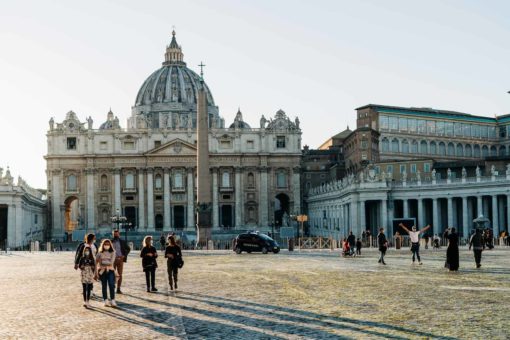
Italy’s digital green certificate (Green Pass) shows that people have been fully vaccinated or recovered from COVID-19.
Italy’s Green Pass system came into effect on August 6, 2021, facilitating people’s access to certain services and activities.
If you plan on travelling to Italy, please note that the digital green pass will allow you to:
- Travel by air, train, ship, or ferry
- Enter restaurants, bars, and pastry shops for consumption at a table indoors
- Attend events (e.g., conventions, congresses, concerts, shows, etc.) outdoors and indoors
- Enter museums and places of culture
- Enter swimming pools, spas, and gyms
- Attend private parties, such as wedding receptions
- Participate in festivals and trade fairs
- Access gaming halls and betting shops, bingo halls and casinos
4. What Happens If You Test Positive for COVID-19 While Visiting Italy?
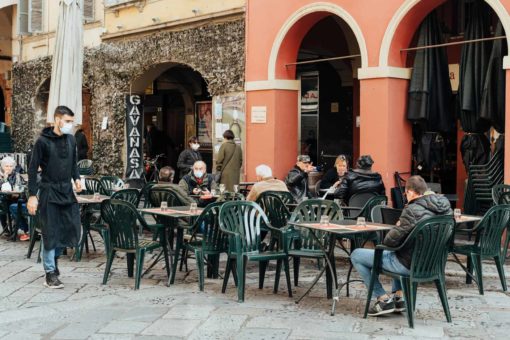
You might ask yourself, “What should I do if I get COVID-19 while in Italy and test positive before I return to my country?”.
If you have symptoms of COVID-19 while in Italy, you should contact the local area’s health authority. The regional numbers are listed on the Italian Ministry of Health official website.
Alternatively, you may call the national COVID-19 helpline 1500 (or +39 0232008345, +39 0283905385 if you are using a non-Italian phone number), and you will be guided and directed to the competent authorities.
If you test positive, you will be required to self-isolate, which may last from 10 days to three weeks. You may self-isolate in a rented house or apartment, second home, a friend’s house (if you avoid contact with them), a hotel, or a so-called “Covid hotel” (at your own expense).
Conclusion: Travelling abroad during the COVID-19 pandemic might seem daunting, but you can do it responsibly with a little bit of planning and patience.
Please note that COVID-19 measures and travel restrictions in Italy change regularly, so make sure you stay informed about the latest changes by accessing the official website of the Italian Ministry of Health.
If you have any questions concerning your Schengen Visa application, please do not hesitate to contact us. We are encouraging you to get your FREE consultation to ensure you walk into the Schengen Visa appointment with confidence, knowing that you have all your documents filed correctly. We can help you enjoy an unforgettable trip to Italy (or other Schengen countries) with no bureaucratic hassle!
